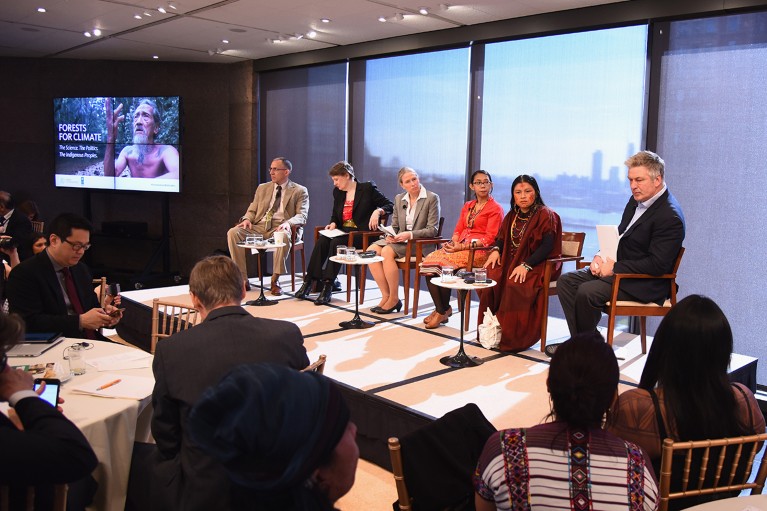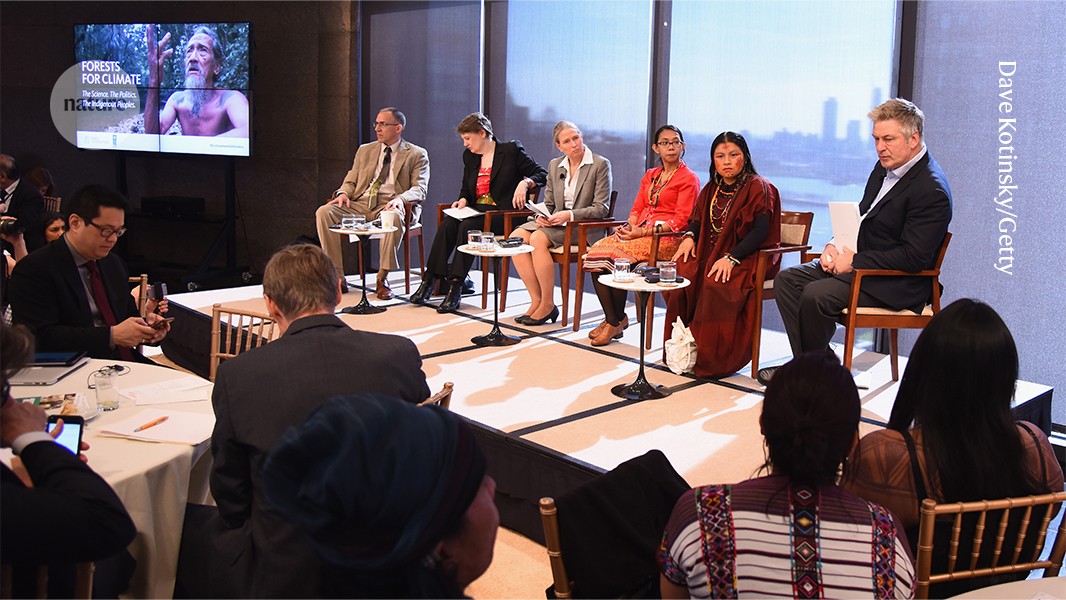
Conferences offer researchers from under-represented backgrounds a chance to network.Credit: Dave Kotinsky/Getty
Several US conferences that bring together scientists from under-represented groups have seen their attendance levels drop this year, in the wake of funding cuts and directives from the administration of US President Donald Trump targeting diversity, equity and inclusion (DEI) initiatives.
Such conferences typically provide crucial networking opportunities for scientists from marginalized backgrounds, including Black, Latino and Indigenous researchers. Fewer people attending this year means fewer chances for students and scientists to advance their careers, says Allen Pierre-Louis, a physicist and PhD student at Duke University in Durham, North Carolina. “This is another leak in the pipeline that was already not in a great place.”
Scientific conferences are leaving the US amid border fears
The crowds have been noticeably thinner than usual at some major conferences held in the past few months. Fewer than 700 scientists — compared with last year’s 1,100 — gathered last week at a joint meeting of the National Society of Black Physicists (NSBP) and the National Society of Hispanic Physicists (NSHP) in San Jose, California. And last month, there were only a few thousand attendees, rather than the usual 5,000–6,000, at a multidisciplinary science conference in Columbus, Ohio, organized by the Society for the Advancement of Chicanos/Hispanics and Native Americans in Science (SACNAS).
Federal agencies that would normally have exhibit booths at such meetings to promote their research, as well as staff members on site to speak to prospective employees, were also not present. Federal funding that is normally available to pay for students’ travel to these conferences has also dried up.
“Investing in these students isn’t ‘charity’ — it’s essential for the nation’s scientific future,” says Mario Borunda, a physicist at Oklahoma State University in Stillwater and the NSHP president. “If we exclude brilliant minds because they can’t afford a plane ticket or because they don’t see themselves represented in the field, the US loses that talent forever.”
Projects cancelled
On his first day in office, Trump issued an executive order that directed the government to terminate programmes related to DEI, which it called “illegal and immoral discrimination”. Agencies soon began cancelling projects, affecting a wide swathe of researchers. One of those agencies was NASA, which terminated a US$530,000 grant that was meant to support the NSBP/NSHP meeting over three years.
That and other cuts left the conference with none of the federal funding it usually relies on, says Stephen Roberson, the NSBP president. “The reason given for this behaviour is because our organization is considered a DEI organization instead of a scientific nonprofit organization,” he says. NASA did not respond to a request for comment from Nature.
Trump called for ‘gold-standard science’: how the NIH, NSF and others are answering
Because of the cuts, the conference had to cut back on travel, lodging and other support it usually provides to students and other attendees. Without that support, “the costs become prohibitive for many people”, says Pierre-Louis, who is the student council representative on the NSBP board. “I think it sends a message to the country about who is doing science and is seen as being worthy of doing science.”
There is no ‘woke’ agenda to the meeting, Borunda notes: conference registration is open to anyone, and the talks are on scientific topics, including quantum and plasma physics. “There is a sense of solidarity here that remains strong,” he says.
The SACNAS conference, a meeting officially known as NDiSTEM, was held in Columbus last month, but many federal agencies and industry partners withdrew from participating because of Trump’s DEI directive and budget cuts, says the organization’s executive director, Juan Amador. One immediate consequence was that the conference lost much of the content meant to connect students with the latest in artificial intelligence (AI) research happening at government agencies and in the private sector. “With them being gone we didn’t have a whole lot of AI — that puts the students behind,” Amador says.




